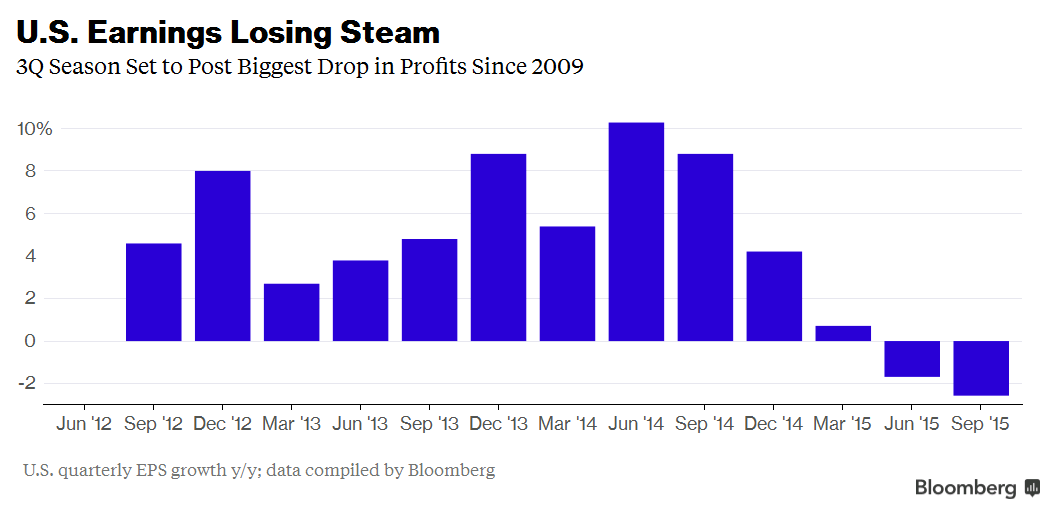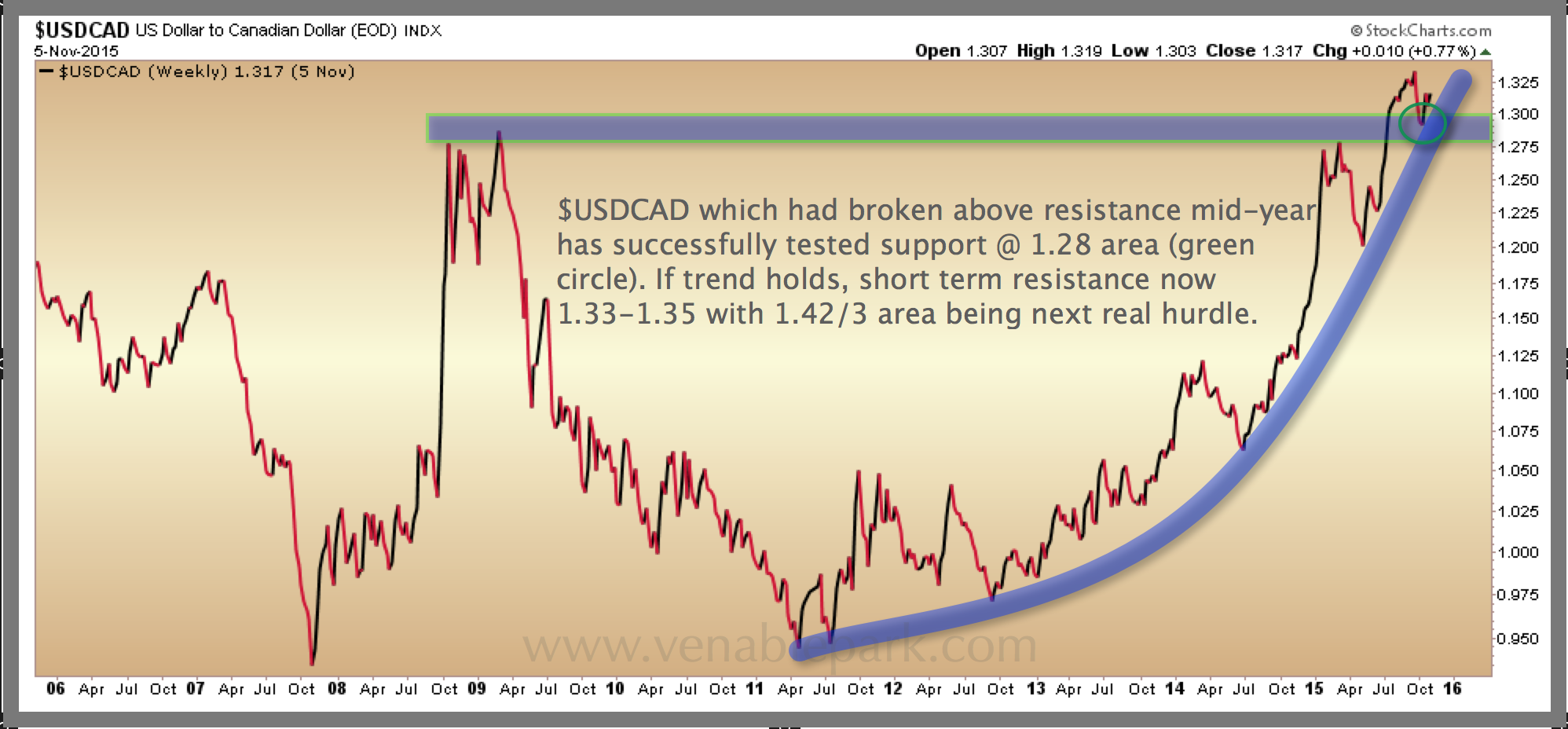As expectations for a Fed rate hike jump to 70%+ following this morning’s strong jobs report the US dollar index has surged more than a percent against the basket of global currencies. This is good for US dollar cash holders. But mostly bad for other risky assets including commodities, other currencies, corporate debt, equities (those ‘defensive’ utility stocks are down more than 4% today) and of course, corporate sales and earnings. A soaring US dollar makes US goods less affordable for trading partners. It also makes the trillions in debt which was issued in US dollars (when the dollar was weaker) more expensive to service for international borrowers.
As shown here since 2000, by the end of August, US corporate sales had already fallen to levels seen in the last two US recessions and that was before the greenback’s 3% surge in the 2 months since.

And it’s not just US sales that are recessing. Some 60% of US multinational earnings are booked overseas and then translated back for US denominated financial reports. A surging dollar means that corporate earnings have been falling since Q2 of 2014, and went negative in 2015, record share buyback schemes notwithstanding. None of which is supportive of US valuations that are today trading near historic high multiples of those same plunging earnings. It is also negative for US GDP as US exports weaken.

Canada is one major trading partner with the US, with some 20% of US exports headed to the great white north. Having now broken through resistance around 1.28 on the US dollar/CAD ratio (below since 2006), U$ strength is above its 2008 recession highs with the 1.42 area the next major test in sight.

The US dollar is on a multi-year (secular) up trend that began in 2008, retested in 2011, and has scarce looked back since. If historic patterns persist, it is likely to continue for some time yet, and in the process exert further downward pressure on GDP and other asset markets.


